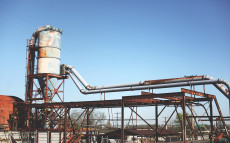- pathfindersAI
- Job Profile
Orthotists and Prosthetists
Summary
Exploring a Career as an Orthotist and Prosthetist
What They Do
Orthotists and Prosthetists are specialized healthcare professionals who design, fabricate, and fit orthopedic braces, known as orthoses, and artificial limbs, known as prostheses. Their primary mission is to enhance the quality of life for individuals with physical impairments by providing them with the necessary tools to regain mobility, functionality, and independence. Orthotists focus on supporting and correcting musculoskeletal deformities, whereas Prosthetists concentrate on creating and fitting artificial limbs for individuals who have lost a limb due to injury, illness, or congenital conditions. The field is not just about mechanics and materials; it's about understanding and addressing the unique needs of each patient to help them achieve their personal and physical goals.
Job Responsibilities
The job responsibilities of an Orthotist and Prosthetist are multifaceted and require a blend of technical know-how, clinical expertise, and patient care. These professionals start by thoroughly examining patients and discussing their medical history, needs, and lifestyles. Based on this evaluation, they design custom orthotic and prosthetic devices using sophisticated techniques and materials. The next stage involves fabricating the devices, ensuring that they meet the exact specifications required for optimal function and comfort. Once the devices are ready, Orthotists and Prosthetists perform careful fittings and adjustments, guiding patients through the process of learning to use and care for their new devices. Follow-up appointments are crucial for ongoing adjustments and to monitor the patient’s progress. Additionally, these professionals often collaborate with other healthcare providers, such as physical therapists and orthopedic surgeons, to ensure a comprehensive rehabilitation plan.
Essential Skills
Successful Orthotists and Prosthetists must possess a unique set of skills that combine technical proficiency with empathetic patient care. Technical skills are paramount, as the design and fabrication process involves precise measurements, mechanical knowledge, and the ability to use specialized tools and software. Strong problem-solving abilities and creativity are also essential, given that each patient presents a unique set of challenges. Good manual dexterity and attention to detail ensure that devices are made to the highest quality standards. Communication skills are equally crucial; Orthotists and Prosthetists need to explain complex medical information in an understandable way, provide emotional support, and work collaboratively within a multidisciplinary team. Additionally, these professionals must be adept at record-keeping and stay updated with the latest advancements in the field through continuous education and training.
Educational Pathways
To pursue a career as an Orthotist and Prosthetist, one must embark on a specialized educational journey. The first step is to earn a bachelor's degree, typically in a relevant field such as health sciences, biomedical engineering, or kinesiology. Following this, aspiring Orthotists and Prosthetists must complete a Master's program in Orthotics and Prosthetics, which is accredited by the Commission on Accreditation of Allied Health Education Programs (CAAHEP). This program combines rigorous coursework in anatomy, biomechanics, and materials science with hands-on clinical training. After obtaining the master's degree, candidates are required to complete a residency program, where they gain practical experience under the supervision of experienced practitioners. Certification is the final step, necessitating passing exams administered by the American Board for Certification in Orthotics, Prosthetics & Pedorthics (ABC) or the Board of Certification/Accreditation (BOC).
Career Prospects
The career prospects for Orthotists and Prosthetists are promising and fulfilling. As the population ages and the prevalence of diabetes and cardiovascular diseases increases, the demand for orthotic and prosthetic services continues to grow. Technological advancements, such as 3D printing and smart prosthetics, are also expanding the capabilities and applications of this field. Graduates can find employment in a variety of settings, including hospitals, specialized clinics, private practices, and rehabilitation centers. Some may choose to engage in research or academia, contributing to the development of new materials and techniques that will shape the future of the profession. Moreover, because the services provided by Orthotists and Prosthetists are essential and often life-changing, there is an inherent job satisfaction in helping individuals gain mobility and independence.
Conclusion
In conclusion, a career as an Orthotist and Prosthetist is a rewarding path that combines medical knowledge, engineering, and compassionate patient care. These healthcare professionals play a crucial role in enhancing the lives of individuals with physical impairments. With a strong educational foundation, essential technical and interpersonal skills, and a commitment to continuous learning, Orthotists and Prosthetists are well-equipped to meet the growing demands of this evolving field. For those who aspire to make a tangible difference in the lives of others while engaging in a dynamic and innovative profession, this career offers both great challenges and profound rewards.
Video
Compensation
| State | Median Salary | Median Hourly | Positions |
|---|---|---|---|
| AL | 93,850 | 45.12 | 90 |
| AZ | 60,670 | 29.17 | 50 |
| AR | 79,900 | 38.41 | 90 |
| CA | 92,390 | 44.42 | 1,000 |
| CT | 56,750 | 27.29 | 60 |
| FL | 61,830 | 29.73 | 550 |
| GA | 75,210 | 36.16 | 180 |
| ID | 87,530 | 42.08 | 30 |
| IL | 76,940 | 36.99 | 140 |
| IN | 76,000 | 36.54 | 100 |
| KS | 59,630 | 28.67 | 60 |
| KY | 87,530 | 42.08 | 40 |
| LA | 67,870 | 32.63 | 270 |
| ME | 76,280 | 36.67 | 100 |
| MD | 71,450 | 34.35 | 200 |
| MA | 86,170 | 41.43 | 240 |
| MI | 81,460 | 39.17 | 610 |
| MN | 68,780 | 33.07 | 180 |
| MO | 59,010 | 28.37 | 330 |
| NV | 85,110 | 40.92 | 80 |
| NH | 99,370 | 47.77 | 120 |
| NJ | 79,860 | 38.40 | 40 |
| NM | 56,770 | 27.29 | 70 |
| NY | 82,000 | 39.42 | 640 |
| NC | 77,220 | 37.12 | 560 |
| OH | 78,240 | 37.61 | 310 |
| OK | 59,010 | 28.37 | 80 |
| OR | 92,730 | 44.58 | 60 |
| PA | 72,580 | 34.89 | 490 |
| SC | 96,990 | 46.63 | 110 |
| SD | 77,760 | 37.39 | 40 |
| TN | 63,770 | 30.66 | 80 |
| TX | 80,000 | 38.46 | 330 |
| UT | 83,640 | 40.21 | 50 |
| VA | 71,830 | 34.54 | 230 |
| WA | 81,660 | 39.26 | 400 |
| WV | 72,440 | 34.83 | 80 |
| WI | 86,650 | 41.66 | 130 |
Similar Occupations
In this area you will find other occupations that are close to the one you were viewing in tasks, knowledge and work environment. If the primary job profile you are viewing isn't quite to your liking, take a look around and see what else is available.
Basic and Premium Accounts have more alternative occupations available than the Free account.

Audiologists - 29-1181.00
Audiologists are healthcare professionals who specialize in diagnosing, treating, and managing hearing loss and balance disorders. They use advanced technology to conduct hearing tests, fit hearing aids, and provide personalized rehabilitation plans to improve patients' auditory health and overall quality of life.
-
$87,740/yr
Median Pay -
13,880
Number of Jobs

Medical Appliance Technicians - 51-9082.00
Medical Appliance Technicians design, fabricate, and repair custom orthotics and prosthetics, such as braces and artificial limbs, to meet patients' specific medical needs. They work closely with healthcare professionals to ensure proper fit, function, and comfort, enhancing the quality of life for individuals requiring these devices.
-
$44,960/yr
Median Pay -
12,550
Number of Jobs